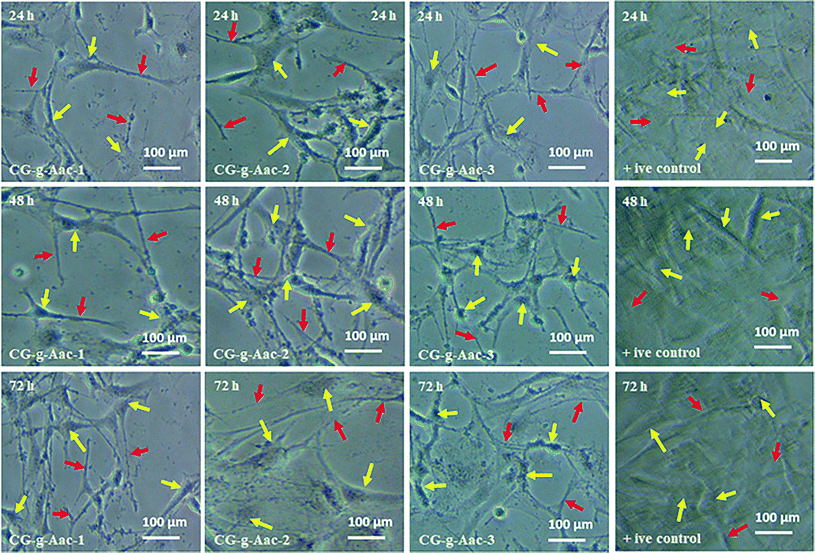 Open Access Article
Open Access ArticleCreative Commons Attribution 3.0 Unported Licence
Correction: Development and in vitro evaluation of κ-carrageenan based polymeric hybrid nanocomposite scaffolds for bone tissue engineering
Muhammad Umar Aslam Khan*abc,
Mohsin Ali Razac,
Hassan Mehboobd,
Mohammed Rafiq Abdul Kadirb,
Saiful Izwan Abd Razakbe,
Saqlain A. Shahf,
Muhammad Zahir Iqbalg and
Rashid Amin*h
aDepartment of Polymer Engineering and Technology, University of the Punjab, 54590 Lahore, Pakistan. E-mail: umar007khan@gmail.com
bSchool of Biomedical Engineering and Health Sciences, Faculty of Engineering, Universiti Teknologi Malaysia, 81300 Skudai, Johor, Malaysia
cDepartment of Metallurgy and Materials Engineering, CEET, University of the Punjab, Lahore, Pakistan
dDepartment of Engineering Management, College of Engineering, Prince Sultan University, P. O. Box No. 66833, Rafha Street, Riyadh 11586, Saudi Arabia
eCenter for Advanced Composite Materials, Universiti Teknologi Malaysia, 81300 Skudai, Johor, Malaysia
fMaterials Science Lab, Department of Physics, Forman Christian College (University), Lahore, Pakistan
gNanotechnology Research Laboratory, Faculty of Engineering Sciences, GIK Institute of Engineering Sciences and Technology, Topi 23640, Khyber Pakhtunkhwa, Pakistan
hDepartment of Biology, College of Sciences, University of Hafr Al Batin, 39524 Hafar Al-batin, Saudi Arabia. E-mail: rashida@uhb.edu.sa
First published on 24th May 2021
Abstract
Correction for ‘Development and in vitro evaluation of κ-carrageenan based polymeric hybrid nanocomposite scaffolds for bone tissue engineering’ by Muhammad Umar Aslam Khan et al., RSC Adv., 2020, 10, 40529–40542. DOI: 10.1039/D0RA07446B.
The authors regret errors in Fig. 9 in the original article. The corrected Fig. 9 is shown below where all three +ive control panels and the 72 h CG-g-Aac-2 panel have been replaced.
The Royal Society of Chemistry apologises for these errors and any consequent inconvenience to authors and readers.
| This journal is © The Royal Society of Chemistry 2021 |

